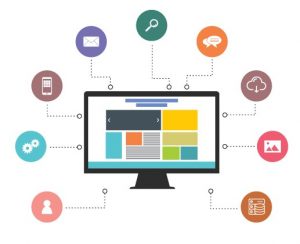 Click to learn more about author Ibrahim Surani.
Click to learn more about author Ibrahim Surani.
The Need for Data Integration
A piece of a jigsaw puzzle, albeit an important component of the overall picture, has little utility on its own. It needs to be properly connected to other pieces of the puzzle to derive meaningful results. Data coming in from disparate sources resemble pieces of a jigsaw. It needs to be integrated in the correct format with the correct piece of information to make sense.
Businesses today receive data from multiple sources at once, and these avenues are increasing as more channels for collecting user data are identified and incorporated into business operations. Data Integration helps in bringing scattered information together in a unified format so that stakeholders can get better business insights. Timely integration of vast volumes of heterogeneous data is imperative to make and support strategic and operational business decisions.
A Challenging Feat to Achieve
Technical complexity of the process makes Data Integration a challenging task. Businesses invest huge amounts in integration projects. To put this in perspective, approximately 25% of IT budgets are spent on Data Integration projects annually. And what about the returns on investment? McKinsey reports that most IT projects deliver 56% less value than expected.
One of the biggest challenges faced by businesses is streamlining the Data Integration process in a way that minimizes cost, optimizes the utility of the resources invested, and yields a positive ROI.
A viable solution to the problem is automation of the integration process with the help of an integration tool. By automating the standard tasks of Data Integration, the workload is transferred from IT professionals to a software solution.
Common Mistakes and Best Practices
When opting for a Data Integration solution, businesses tend to overlook certain important factors and end up making common mistakes. Here are some factors you should consider when evaluating different options and comparing different solutions available in the market.
- Put Business Needs First; Tools Should be Secondary
Common Mistake: Multiple solution providers seem to offer similar Data Integration services on the surface, but they might be using different approaches. Minor differences like these are not apparent, and a business development manager who is not familiar with IT processes might not even be able to distinguish between the different approaches used by different solution providers.
For instance, I had a client once who was comparing our Data Integration product with another provider’s. The factor that the client overlooked was that the ETL approach we use for Data Integration is completely different from the ESB approach used by the other provider.
Best Practice: Business needs should be identified first, and then a relevant approach should be decided to address those needs. It should not be the other way around. It is important to ensure that the approach used by the solution provider complements the business goals.
- Decide on the Approach – Build or Buy?
Common Mistake: Many businesses still think that building a Data Integration solution is more cost effective than buying a commercial product. They fail to take total cost of ownership and other opportunity costs into account.
Best Practice: Take total cost of ownership and opportunity costs into account and then evaluate if building an integration solution is worth investing the resources. The best practice is to customize a COTS product to meet specific business needs.
- Think About Long-term Benefits
Common Mistake: While opting for a Data Integration solution, businesses tend to look at the short-term benefits and aim for a quick ROI. The feasibility and relevancy of the opted solution in the long-term is overlooked.
Best Practice: Data requirements keep changing at a rapid pace and your solution provider must be able to keep up with those changes to address any challenges that might arise in future. And the Data Integration software must be flexible enough to easily incorporate those changes.
- Shift the Focus from IT to Business Users
Common Mistake: Approximately, 41% of business users find Data Integration technologies complex to use. It is because most of them are designed keeping IT professionals and developers in mind. These tools don’t serve the purpose of bridging the gap between business users and IT.
Best Practice: It is business users that derive the most value from the data; therefore, opt for an intuitive tool with a user-friendly interface that can easily be used by people with no or minimal programming knowledge.
A Data Integration tool will have a significant impact on your core business activities. The right choice of tool can streamline your data management process, free your IT resources to focus on more critical business aspects, maximize your return on investments, and give frontline business users more control over data. On the other hand, a wrong choice might leave you with a complex tool, increased expenses, and poor results.
Image Credit: Astera Software
